06/12/2010
Euclid's Elements Book I
![]()
Table of contents
- Definitions (23)
- Postulates (5)
- Common Notions (5)
- Propositions (48)
- Guide to Book I
Definitions
- Definition 1.
- A point is that which has no part.
- Definition 2.
- A line is breadthless length.
- Definition 3.
- The ends of a line are points.
- Definition 4.
- A straight line is a line which lies evenly with the points on itself.
- Definition 5.
- A surface is that which has length and breadth only.
- Definition 6.
- The edges of a surface are lines.
- Definition 7.
- A plane surface is a surface which lies evenly with the straight lines on itself.
- Definition 8.
- A plane angle is the inclination to one another of two lines in a plane which meet one another and do not lie in a straight line.
- Definition 9.
- And when the lines containing the angle are straight, the angle is called rectilinear.
- Definition 10.
- When a straight line standing on a straight line makes the adjacent angles equal to one another, each of the equal angles is right, and the straight line standing on the other is called a perpendicular to that on which it stands.
- Definition 11.
- An obtuse angle is an angle greater than a right angle.
- Definition 12.
- An acute angle is an angle less than a right angle.
- Definition 13.
- A boundary is that which is an extremity of anything.
- Definition 14.
- A figure is that which is contained by any boundary or boundaries.
- Definition 15.
- A circle is a plane figure contained by one line such that all the straight lines falling upon it from one point among those lying within the figure equal one another.
- Definition 16.
- And the point is called the center of the circle.
- Definition 17.
- A diameter of the circle is any straight line drawn through the center and terminated in both directions by the circumference of the circle, and such a straight line also bisects the circle.
- Definition 18.
- A semicircle is the figure contained by the diameter and the circumference cut off by it. And the center of the semicircle is the same as that of the circle.
- Definition 19.
- Rectilinear figures are those which are contained by straight lines, trilateral figures being those contained by three, quadrilateral those contained by four, and multilateral those contained by more than four straight lines.
- Definition 20.
- Of trilateral figures, an equilateral triangle is that which has its three sides equal, an isosceles triangle that which has two of its sides alone equal, and a scalene triangle that which has its three sides unequal.
- Definition 21.
- Further, of trilateral figures, a right-angled triangle is that which has a right angle, an obtuse-angled triangle that which has an obtuse angle, and an acute-angled triangle that which has its three angles acute.
- Definition 22.
- Of quadrilateral figures, a square is that which is both equilateral and right-angled; an oblong that which is right-angled but not equilateral; a rhombus that which is equilateral but not right-angled; and arhomboid that which has its opposite sides and angles equal to one another but is neither equilateral nor right-angled. And let quadrilaterals other than these be called trapezia.
- Definition 23
- Parallel straight lines are straight lines which, being in the same plane and being produced indefinitely in both directions, do not meet one another in either direction.
Postulates
Let the following be postulated:- Postulate 1.
- To draw a straight line from any point to any point.
- Postulate 2.
- To produce a finite straight line continuously in a straight line.
- Postulate 3.
- To describe a circle with any center and radius.
- Postulate 4.
- That all right angles equal one another.
- Postulate 5.
- That, if a straight line falling on two straight lines makes the interior angles on the same side less than two right angles, the two straight lines, if produced indefinitely, meet on that side on which are the angles less than the two right angles.
Common Notions
- Common notion 1.
- Things which equal the same thing also equal one another.
- Common notion 2.
- If equals are added to equals, then the wholes are equal.
- Common notion 3.
- If equals are subtracted from equals, then the remainders are equal.
- Common notion 4.
- Things which coincide with one another equal one another.
- Common notion 5.
- The whole is greater than the part.
Propositions
- Proposition 1.
- To construct an equilateral triangle on a given finite straight line.
- Proposition 2.
- To place a straight line equal to a given straight line with one end at a given point.
- Proposition 3.
- To cut off from the greater of two given unequal straight lines a straight line equal to the less.
- Proposition 4.
- If two triangles have two sides equal to two sides respectively, and have the angles contained by the equal straight lines equal, then they also have the base equal to the base, the triangle equals the triangle, and the remaining angles equal the remaining angles respectively, namely those opposite the equal sides.
- Proposition 5.
- In isosceles triangles the angles at the base equal one another, and, if the equal straight lines are produced further, then the angles under the base equal one another.
- Proposition 6.
- If in a triangle two angles equal one another, then the sides opposite the equal angles also equal one another.
- Proposition 7.
- Given two straight lines constructed from the ends of a straight line and meeting in a point, there cannot be constructed from the ends of the same straight line, and on the same side of it, two other straight lines meeting in another point and equal to the former two respectively, namely each equal to that from the same end.
- Proposition 8.
- If two triangles have the two sides equal to two sides respectively, and also have the base equal to the base, then they also have the angles equal which are contained by the equal straight lines.
- Proposition 9.
- To bisect a given rectilinear angle.
- Proposition 10.
- To bisect a given finite straight line.
- Proposition 11.
- To draw a straight line at right angles to a given straight line from a given point on it.
- Proposition 12.
- To draw a straight line perpendicular to a given infinite straight line from a given point not on it.
- Proposition 13.
- If a straight line stands on a straight line, then it makes either two right angles or angles whose sum equals two right angles.
- Proposition 14.
- If with any straight line, and at a point on it, two straight lines not lying on the same side make the sum of the adjacent angles equal to two right angles, then the two straight lines are in a straight line with one another.
- Proposition 15.
- If two straight lines cut one another, then they make the vertical angles equal to one another.
Corollary. If two straight lines cut one another, then they will make the angles at the point of section equal to four right angles.
- Proposition 16.
- In any triangle, if one of the sides is produced, then the exterior angle is greater than either of the interior and opposite angles.
- Proposition 17.
- In any triangle the sum of any two angles is less than two right angles.
- Proposition 18.
- In any triangle the angle opposite the greater side is greater.
- Proposition 19.
- In any triangle the side opposite the greater angle is greater.
- Proposition 20.
- In any triangle the sum of any two sides is greater than the remaining one.
- Proposition 21.
- If from the ends of one of the sides of a triangle two straight lines are constructed meeting within the triangle, then the sum of the straight lines so constructed is less than the sum of the remaining two sides of the triangle, but the constructed straight lines contain a greater angle than the angle contained by the remaining two sides.
- Proposition 22.
- To construct a triangle out of three straight lines which equal three given straight lines: thus it is necessary that the sum of any two of the straight lines should be greater than the remaining one.
- Proposition 23.
- To construct a rectilinear angle equal to a given rectilinear angle on a given straight line and at a point on it.
- Proposition 24.
- If two triangles have two sides equal to two sides respectively, but have one of the angles contained by the equal straight lines greater than the other, then they also have the base greater than the base.
- Proposition 25.
- If two triangles have two sides equal to two sides respectively, but have the base greater than the base, then they also have the one of the angles contained by the equal straight lines greater than the other.
- Proposition 26.
- If two triangles have two angles equal to two angles respectively, and one side equal to one side, namely, either the side adjoining the equal angles, or that opposite one of the equal angles, then the remaining sides equal the remaining sides and the remaining angle equals the remaining angle.
- Proposition 27.
- If a straight line falling on two straight lines makes the alternate angles equal to one another, then the straight lines are parallel to one another.
- Proposition 28.
- If a straight line falling on two straight lines makes the exterior angle equal to the interior and opposite angle on the same side, or the sum of the interior angles on the same side equal to two right angles, then the straight lines are parallel to one another.
- Proposition 29.
- A straight line falling on parallel straight lines makes the alternate angles equal to one another, the exterior angle equal to the interior and opposite angle, and the sum of the interior angles on the same side equal to two right angles.
- Proposition 30.
- Straight lines parallel to the same straight line are also parallel to one another.
- Proposition 31.
- To draw a straight line through a given point parallel to a given straight line.
- Proposition 32.
- In any triangle, if one of the sides is produced, then the exterior angle equals the sum of the two interior and opposite angles, and the sum of the three interior angles of the triangle equals two right angles.
- Proposition 33.
- Straight lines which join the ends of equal and parallel straight lines in the same directions are themselves equal and parallel.
- Proposition 34.
- In parallelogrammic areas the opposite sides and angles equal one another, and the diameter bisects the areas.
- Proposition 35.
- Parallelograms which are on the same base and in the same parallels equal one another.
- Proposition 36.
- Parallelograms which are on equal bases and in the same parallels equal one another.
- Proposition 37.
- Triangles which are on the same base and in the same parallels equal one another.
- Proposition 38.
- Triangles which are on equal bases and in the same parallels equal one another.
- Proposition 39.
- Equal triangles which are on the same base and on the same side are also in the same parallels.
- Proposition 40.
- Equal triangles which are on equal bases and on the same side are also in the same parallels.
- Proposition 41.
- If a parallelogram has the same base with a triangle and is in the same parallels, then the parallelogram is double the triangle.
- Proposition 42.
- To construct a parallelogram equal to a given triangle in a given rectilinear angle.
- Proposition 43.
- In any parallelogram the complements of the parallelograms about the diameter equal one another.
- Proposition 44.
- To a given straight line in a given rectilinear angle, to apply a parallelogram equal to a given triangle.
- Proposition 45.
- To construct a parallelogram equal to a given rectilinear figure in a given rectilinear angle.
- Proposition 46.
- To describe a square on a given straight line.
- Proposition 47.
- In right-angled triangles the square on the side opposite the right angle equals the sum of the squares on the sides containing the right angle.
- Proposition 48.
- If in a triangle the square on one of the sides equals the sum of the squares on the remaining two sides of the triangle, then the angle contained by the remaining two sides of the triangle is right.
About the Definitions
The Elements begins with a list of definitions. Some of these indicate little more than certain concepts will be discussed, such as Def.I.1, Def.I.2, and Def.I.5, which introduce the terms point, line, and surface. (Note that for Euclid, the concept of line includes curved lines.) Others are substantial definitions which actually describe new concepts in terms of old ones. For example, Def.I.10 defines a right angle as one of two equal adjacent angles made when one straight line meets another. Other definitions look like they're substantial, but actually are not. For instance, Def.I.4 says a straight line "is a line which lies evenly with the points on itself." No where in the Elements is the defining phrase "which lies evenly with the points on itself" applicable. Thus, this definition indicates, at most, that some lines under discussion will be straight lines.It has been suggested that the definitions were added to the Elements sometime after Euclid wrote them. Another possibility is that they are actually from a different work, perhaps older. In Def.I.22 special kinds of quadrilaterals are defined including square, oblong (a rectangle that are not squares), rhombus (equilateral but not a square), and rhomboid (parallelogram but not a rhombus). Except for squares, these other shapes are not mentioned in the Elements. Euclid does use parallelograms, but they're not defined in this definition. Also, the exclusive nature of some of these terms—the part that indicates not a square—is contrary to Euclid's practice of accepting squares and rectangles as kinds of parallelograms.
About the Postulates
Following the list of definitions is a list of postulates. Each postulate is an axiom—which means a statement which is accepted without proof— specific to the subject matter, in this case, plane geometry. Most of them are constructions. For instance, Post.I.1 says a straight line can be drawn between two points, and Post.I.3 says a circle can be drawn given a specified point to be the center and another point to be on the circumference. The fourth postulate, Post.I.4, is not a constuction, but says that all right angles are equal.About magnitudes and the Common Notions
The Common Notions are also axioms, but they refer to magnitudes of various kinds. The kind of magnitude that appears most frequently is that of straight line. Other important kinds are rectilinear angles and areas (plane figures). Later books include other kinds.In proposition III.16 (but nowhere else) angles with curved sides are compared with rectilinear angles which shows that rectilinear angles are to be considered as a special kind of plane angle. That agrees with Euclid's definition of them in I.Def.9 and I.Def.8.
Also in Book III, parts of circumferences of circles, that is, arcs, appear as magnitudes. Only arcs of equal circles can be compared or added, so arcs of equal circles comprise a kind of magnitude, while arcs of unequal circles are magnitudes of different kinds. These kinds are all different from straight lines. Whereas areas of figures are comparable, different kinds of curves are not.
Book V includes the general theory of ratios. No particular kind of magnitude is specified in that book. It may come as a surprise that ratios do not themselves form a kind of magnitude since they can be compared, but they cannot be added. See the guide on Book V for more information.
Number theory is treated in Books VII through IX. It could be considered that numbers form a kind of magnitude as pointed out by Aristotle.
Beginning in Book XI, solids are considered, and they form the last kind of magnitude discussed in the Elements.
The propositions
Following the definitions, postulates, and common notions, there are 48 propositions. Each of these propositions includes a statement followed by a proof of the statement. Each statement of the proof is logically justified by a definition, postulate, common notion, or an earlier proposition that has already been proven. There are gaps in the logic of some of the proofs, and these are mentioned in the commenaries after the propositions. Also included in the proof is a diagram illustrating the proof.Some of the propositions are constructions. A construction depends, ultimately, on the constructive postulates about drawing lines and circles. The first part of a proof for a constuctive proposition is how to perform the construction. The rest of the proof (usually the longer part), shows that the proposed construction actually satisfies the goal of the proposition. In the list of propositions in each book, the constructions are displayed in red.
Most of the propositions, however, are not constructions. Their statements say that under certain conditions, certain other conditions logically follow. For example, Prop.I.5 says that if a triangle has the property that two of its sides are equal, then it follows that the angles opposite these sides (called the "base angles") are also equal. Even the propositions that are not constructions may have constructions included in their proofs since auxillary lines or circles may be needed in the explanation. But the bulk of the proof is, as for the constructive propositions, a sequence of statements that are logically justified and which culminates in the statement of the proposition.
Logical structure of Book I
The various postulates and common notions are frequently used in Book I. Only two of the propositions rely solely on the postulates and axioms, namely, I.1 and I.4. The logical chains of propositions in Book I are longer than in the other books; there are long sequences of propositions each relying on the previous.| Dependencies within Book I | ||
| 1 | 2 | 3 |
| 3, 4 | 5, 6 | |
| 5 | 7 | 8 |
| 1, 3, 8 | 9, 11 | |
| 1, 4, 9 | 10 | |
| 8, 10 | 12 | |
| 11 | 13 | 14, 15 |
| 3, 4, 10, 15 | 16 | 27 |
| 13, 16 | 17 | |
| 3, 5, 16 | 18 | |
| 5, 18 | 19 | |
| 3, 5, 19 | 20 | |
| 16, 20 | 21 | |
| 3, 20 | 22 | |
| 8, 22 | 23 | |
| 3, 4, 5, 19, 23 | 24 | |
| 4, 24 | 25 | |
| 3, 4, 16 | 26 | |
| 13, 15, 27 | 28, 29 | |
| 29 | 30 | |
| 23, 27 | 31 | |
| 13, 29, 31 | 32 | |
| 4, 27, 29 | 33 | |
| 4, 26, 29 | 34 | 43 |
| 4, 29, 34 | 35 | |
| 33, 34, 35 | 36 | |
| 31, 34, 35 | 37 | |
| 31, 34, 36 | 38 | |
| 31, 37 | 39 | |
| 31, 38 | 40 | |
| 34, 37 | 41 | |
| 10, 23, 31, 38, 41 | 42 | |
| 15, 29, 31, 42, 43 | 44 | |
| 14, 29, 30, 33, 34, 42, 44 | 45 | |
| 3, 11, 29, 31, 34 | 46 | |
| 4, 14, 31, 41, 46 | 47 | |
| 3, 8, 11, 47 | 48 | |
| Next book: Book II |
|
© 1996
D.E.Joyce
Clark University
Source : http://aleph0.clarku.edu/~djoyce/java/elements/bookI/book...
19:13 Publié dans Euclid's Elements Book I | Lien permanent | Commentaires (0) |  |
|  del.icio.us |
del.icio.us |  |
|  Digg |
Digg | ![]() Facebook
Facebook











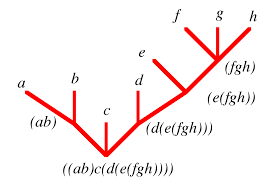


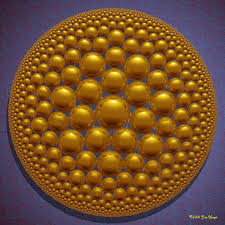
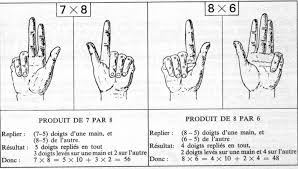


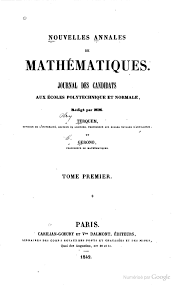





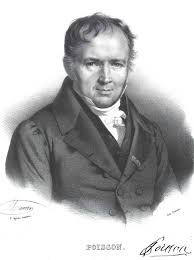

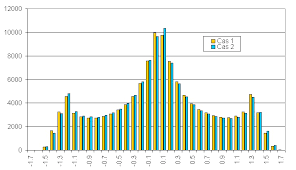
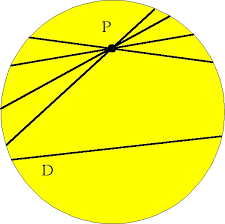


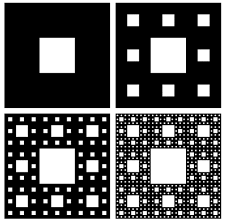
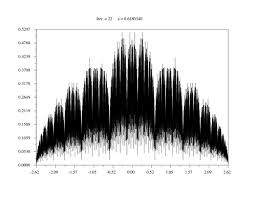
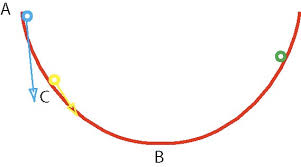

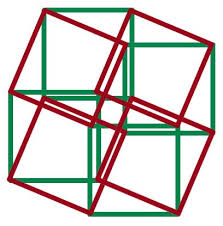



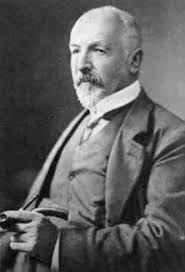


Les commentaires sont fermés.